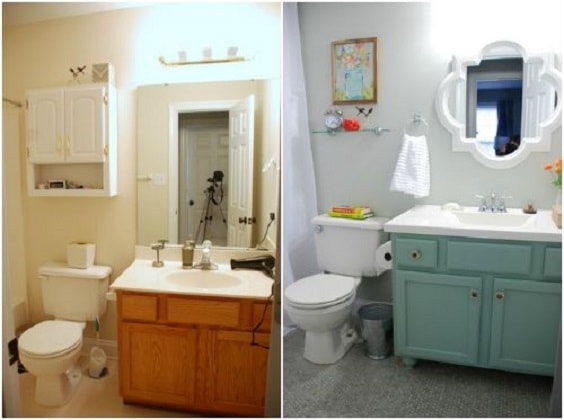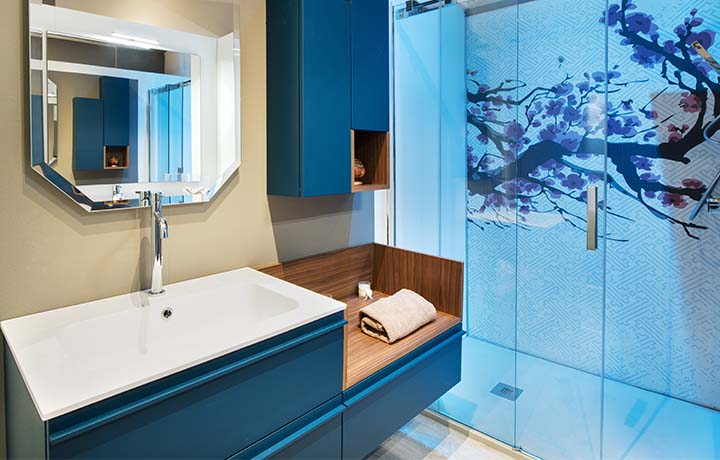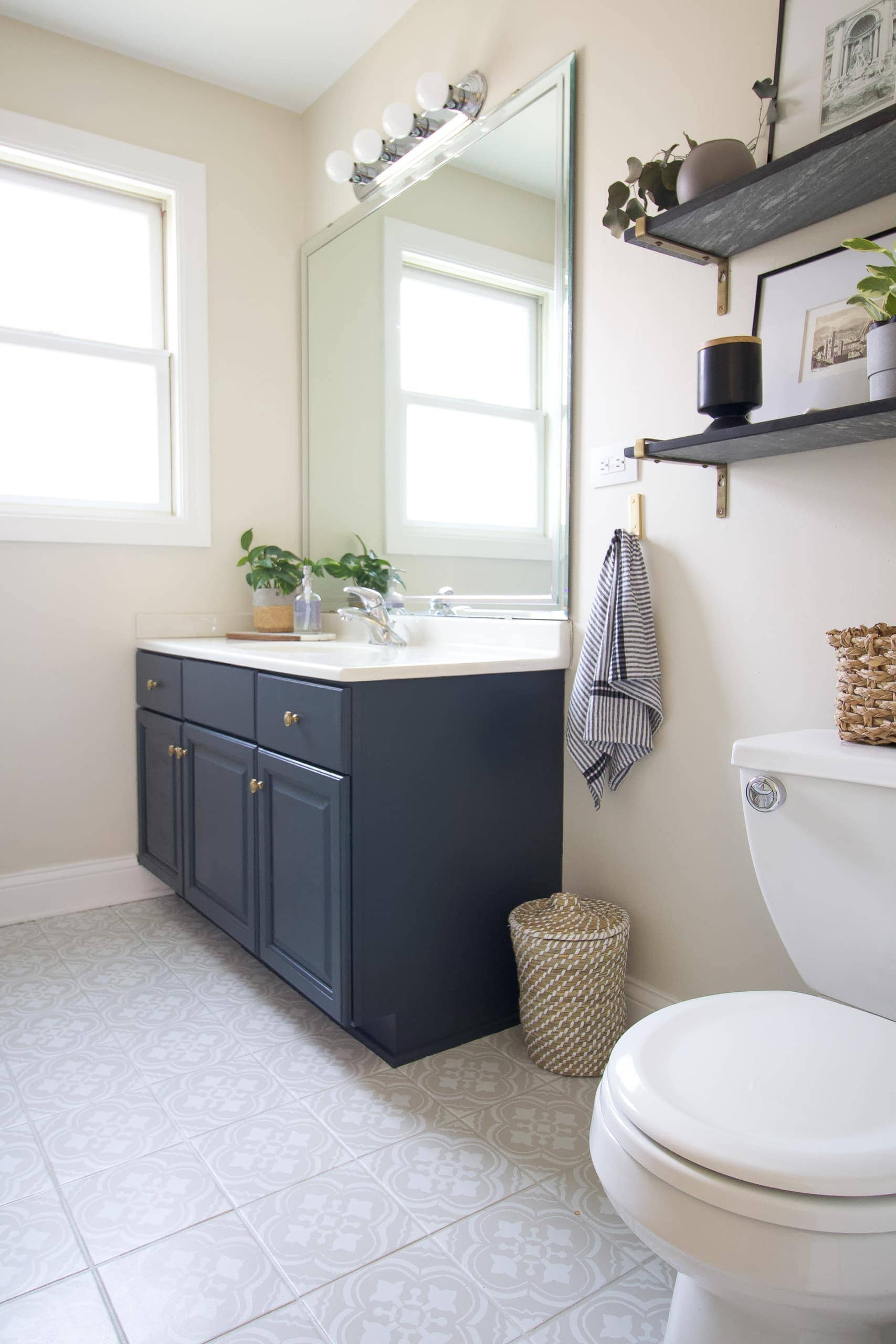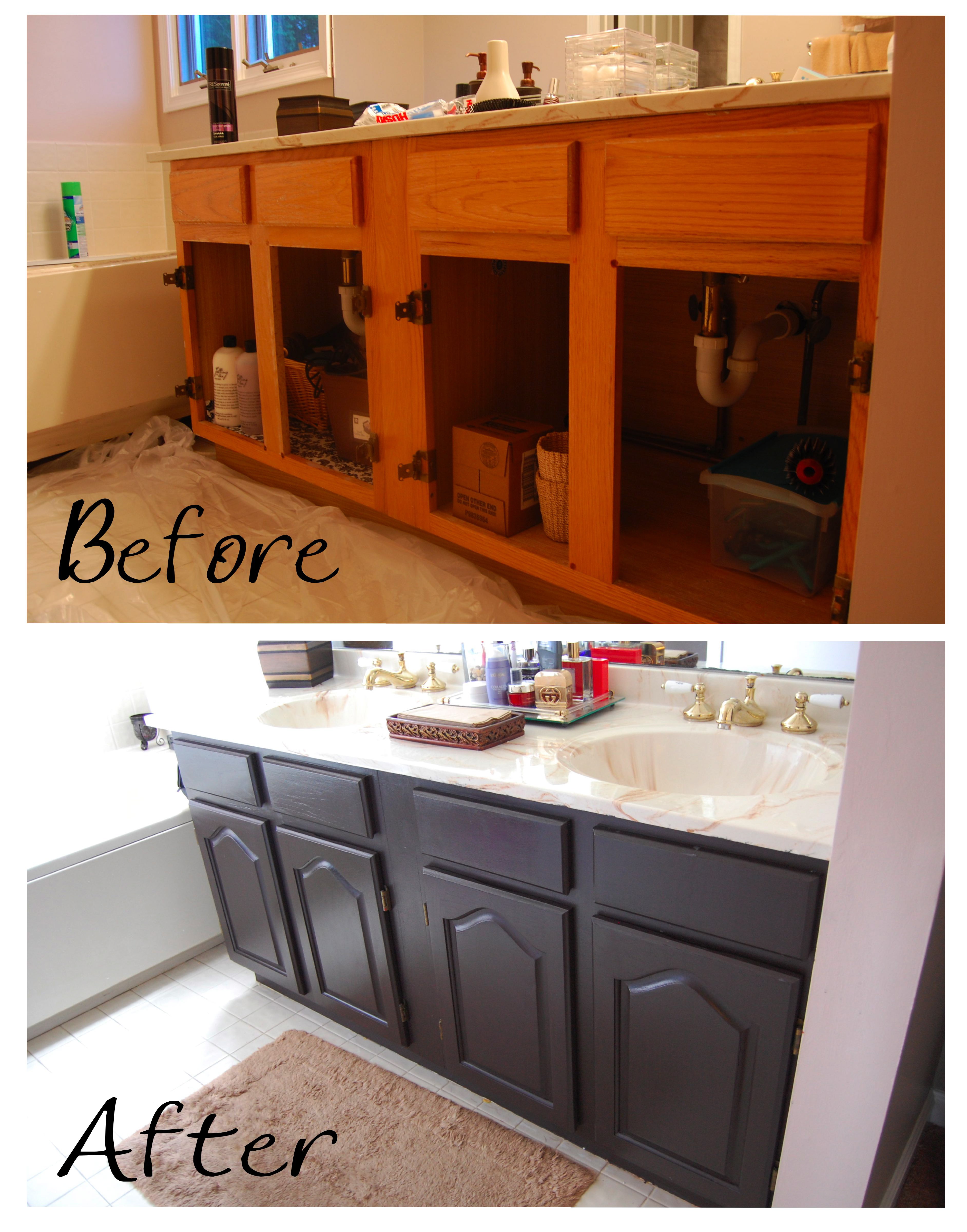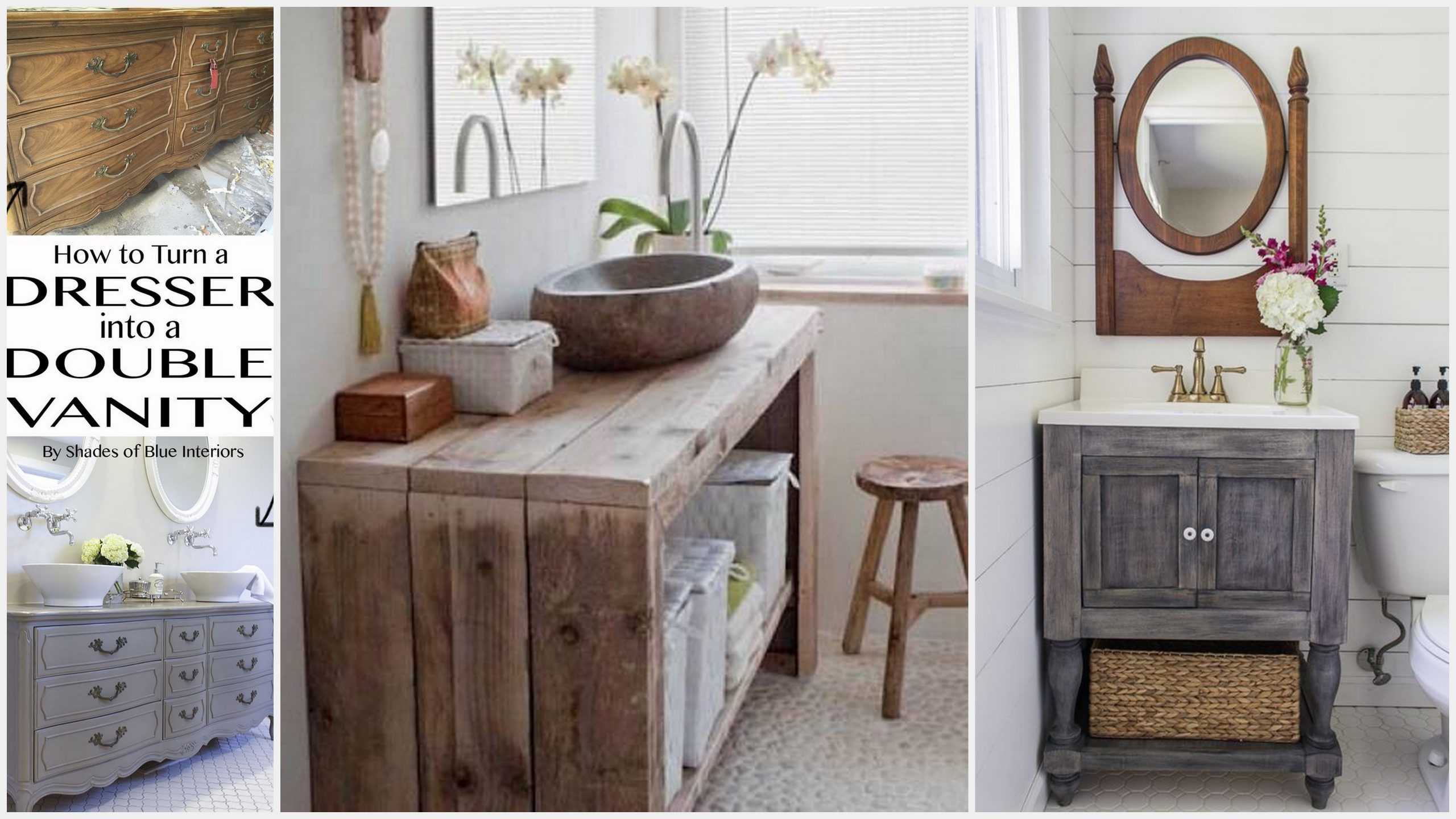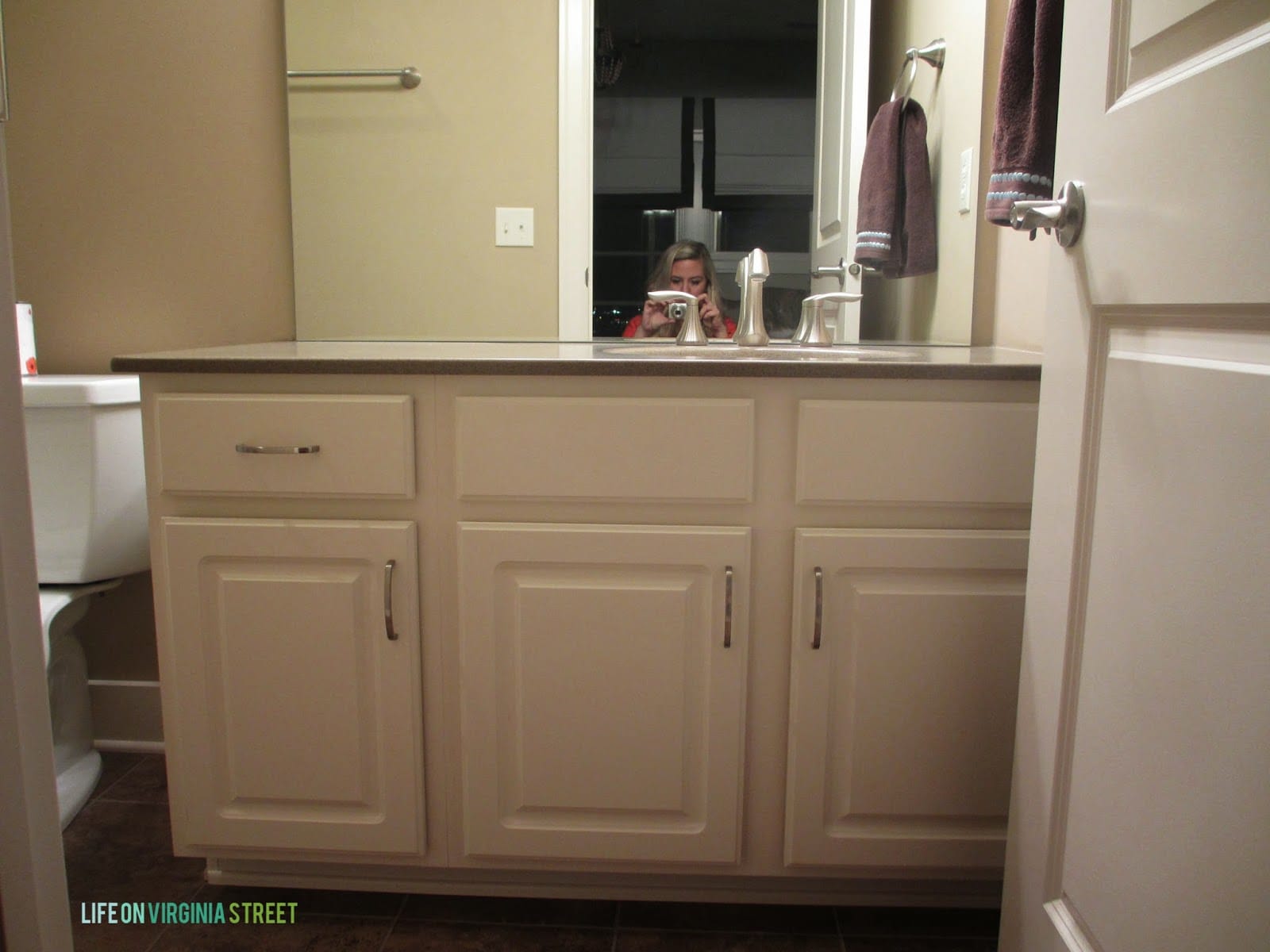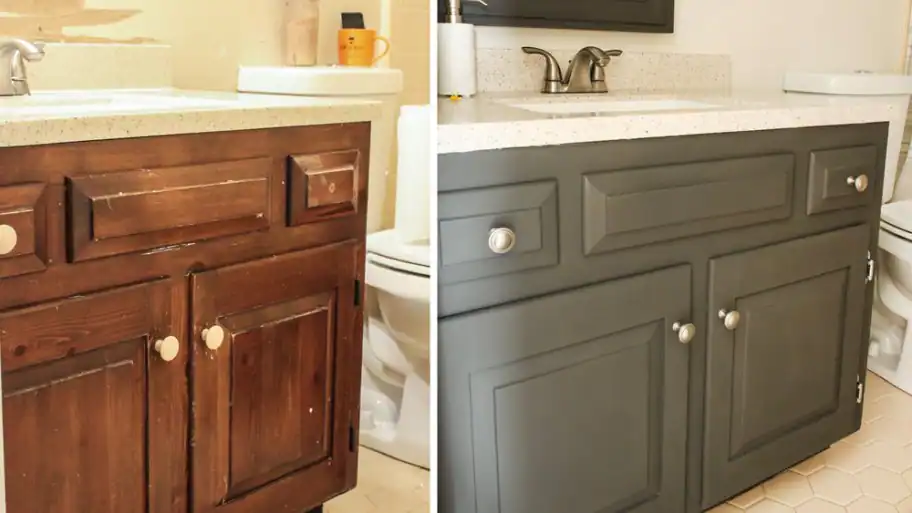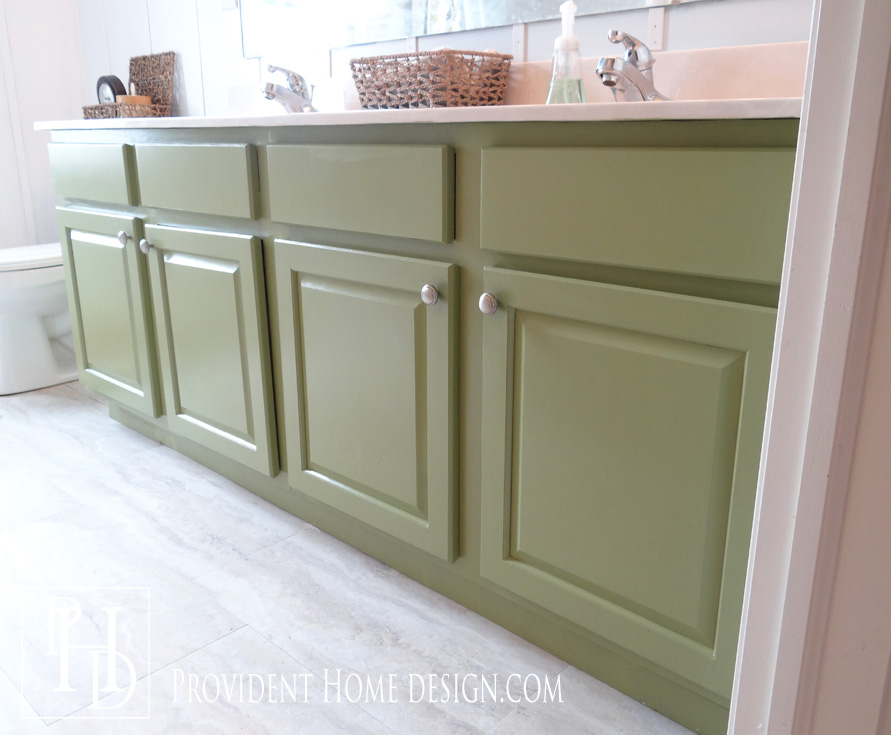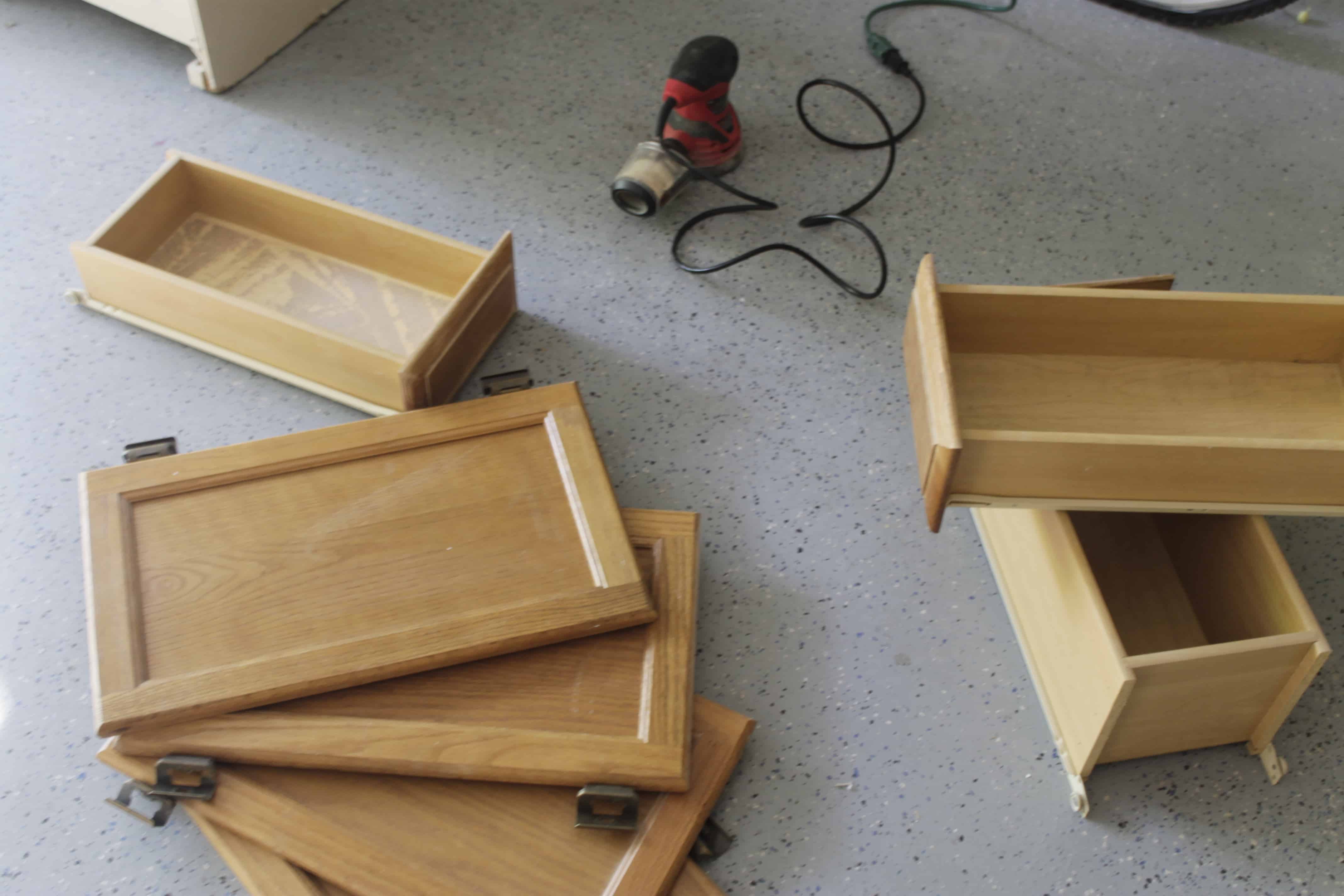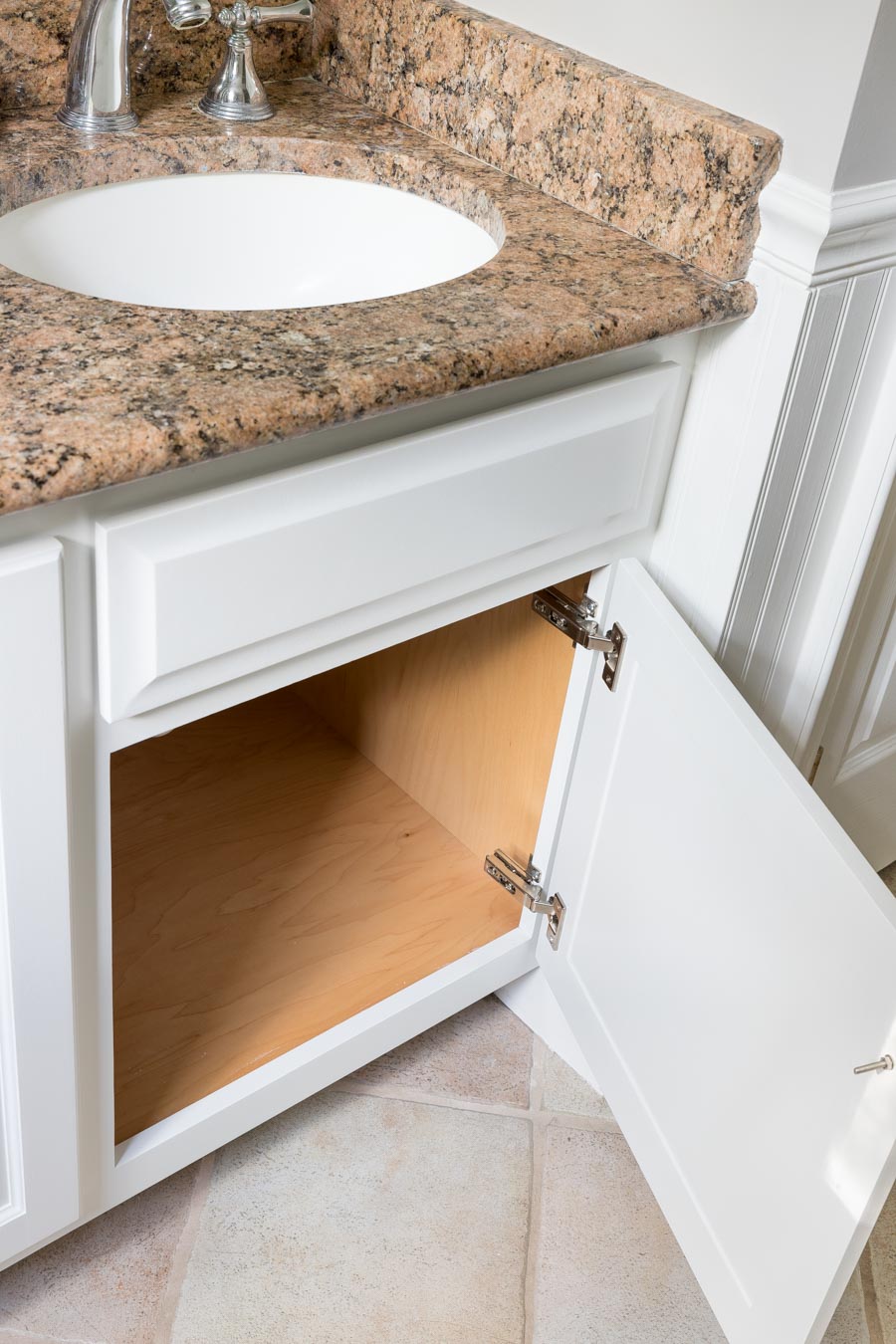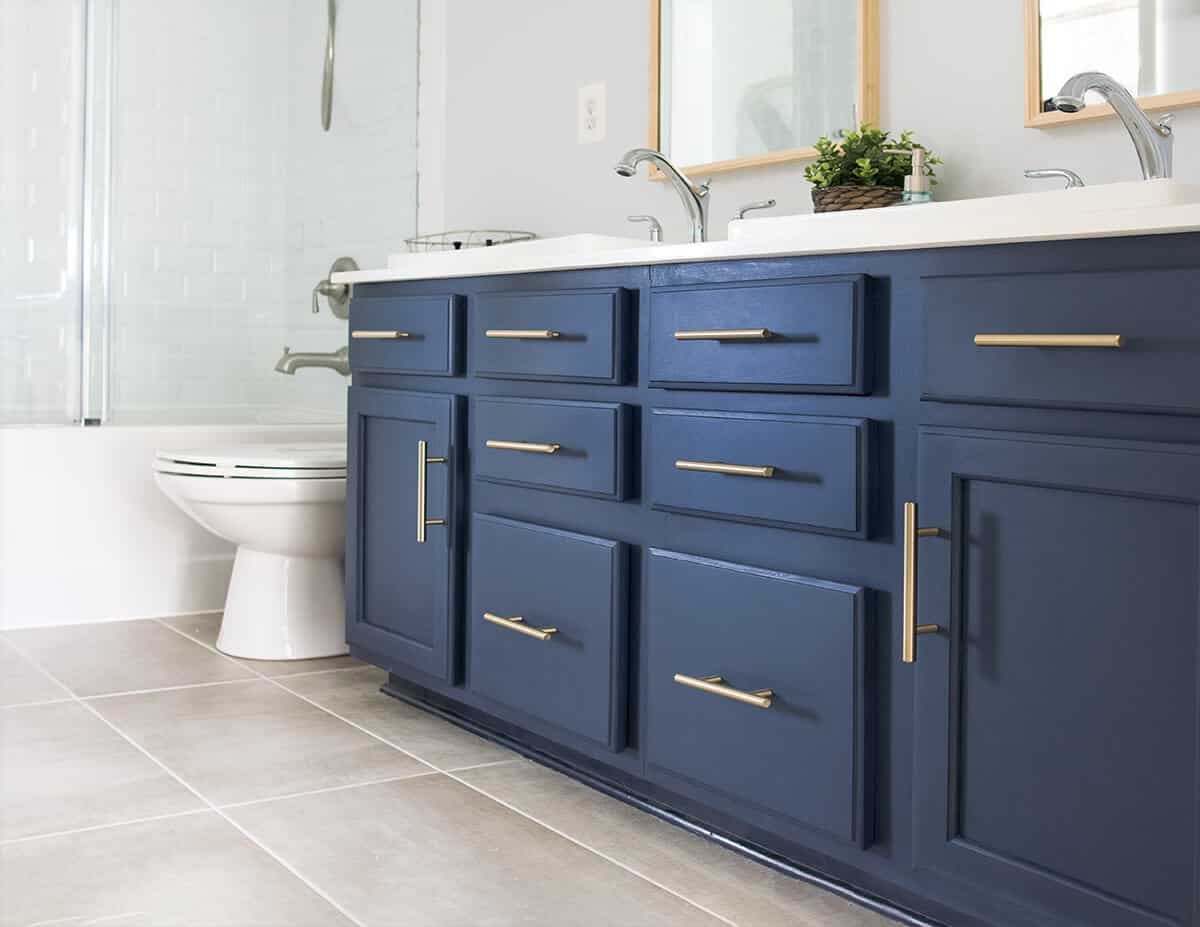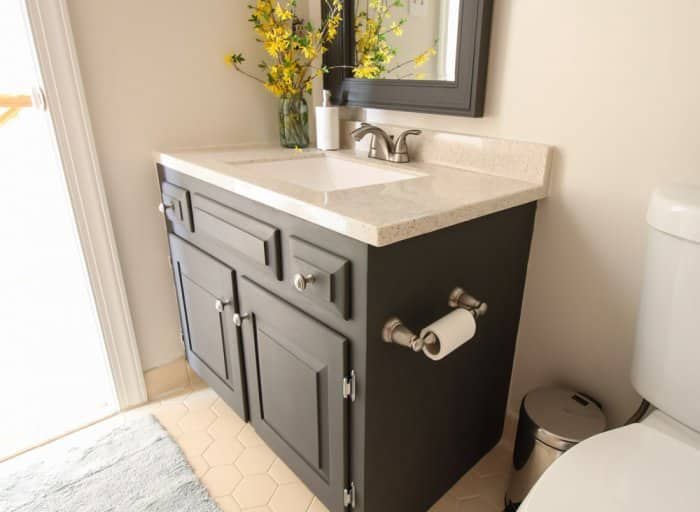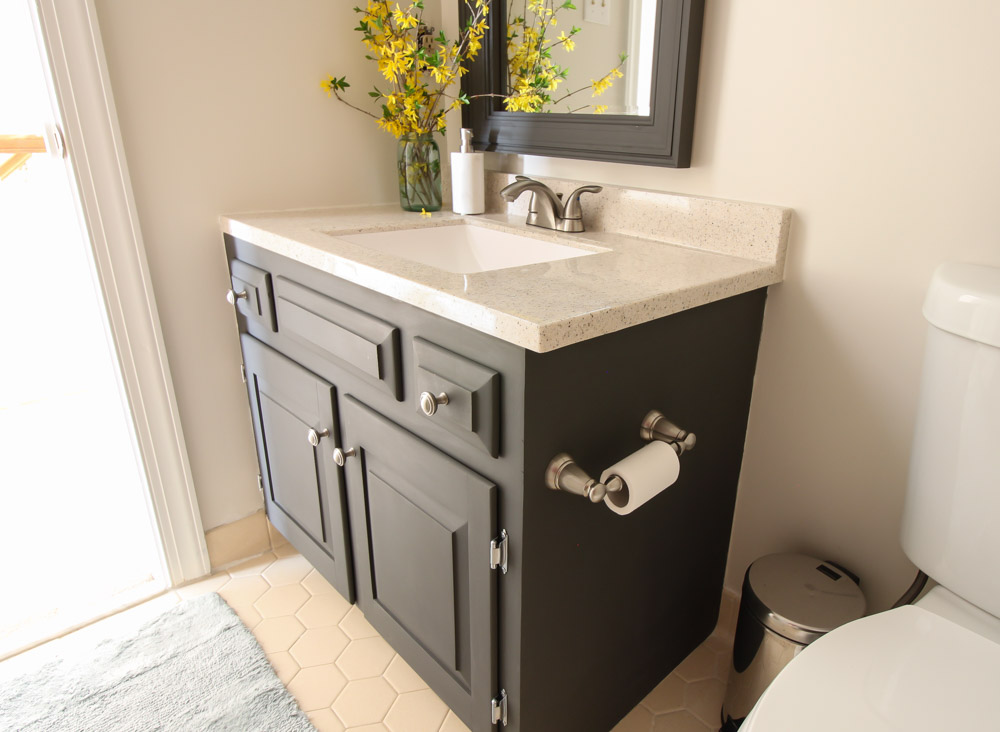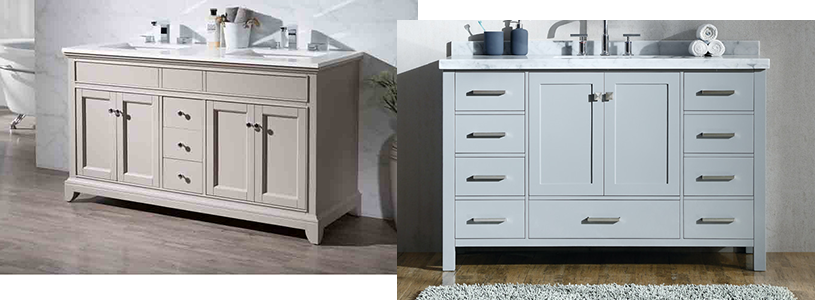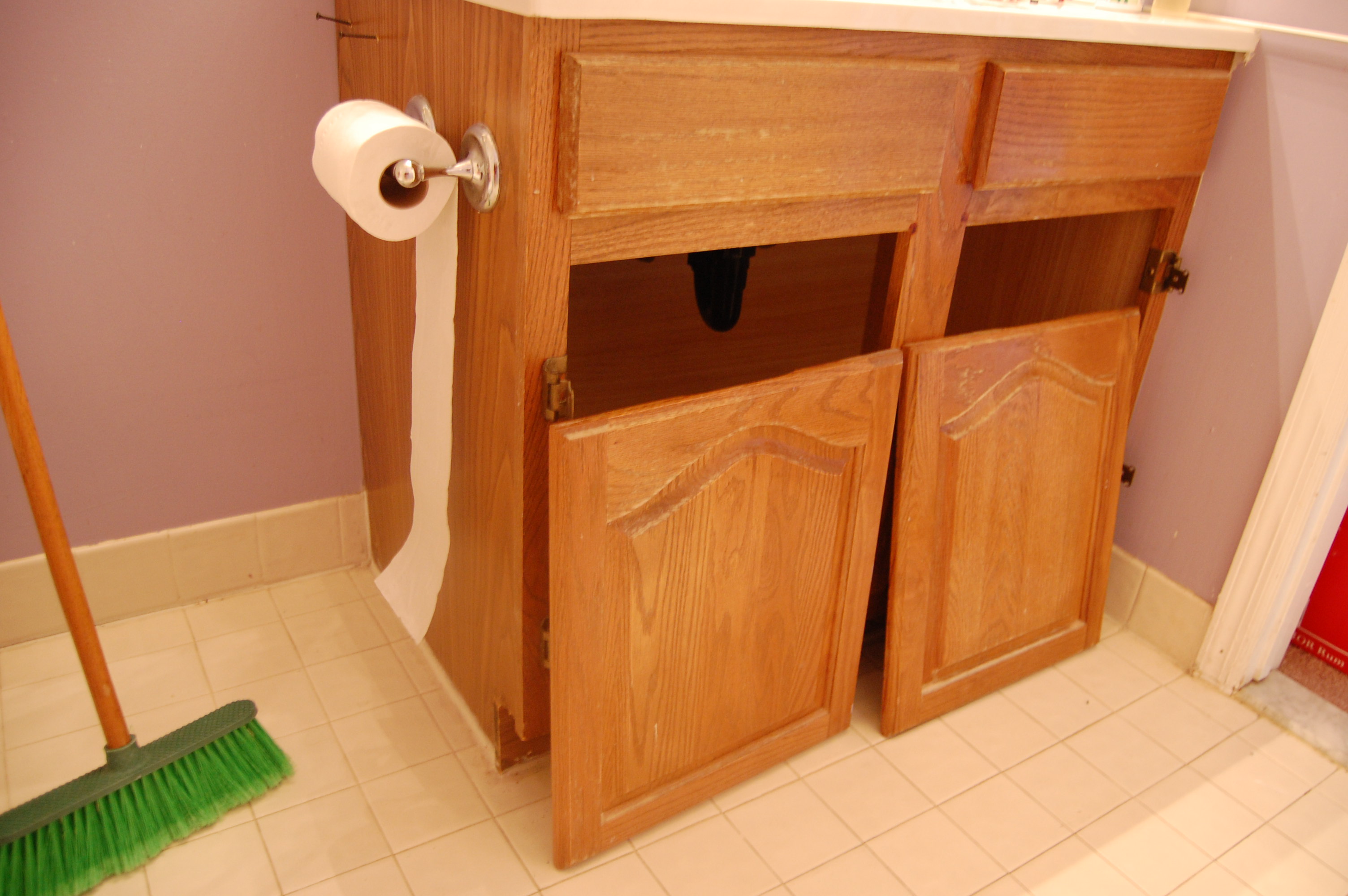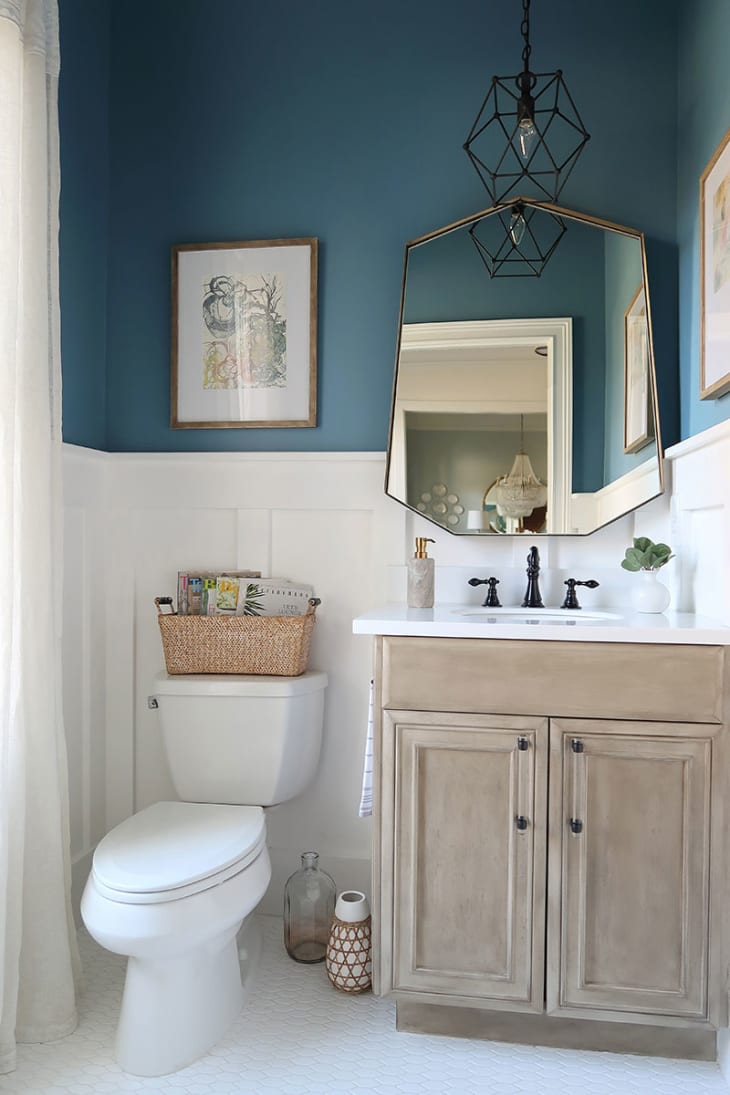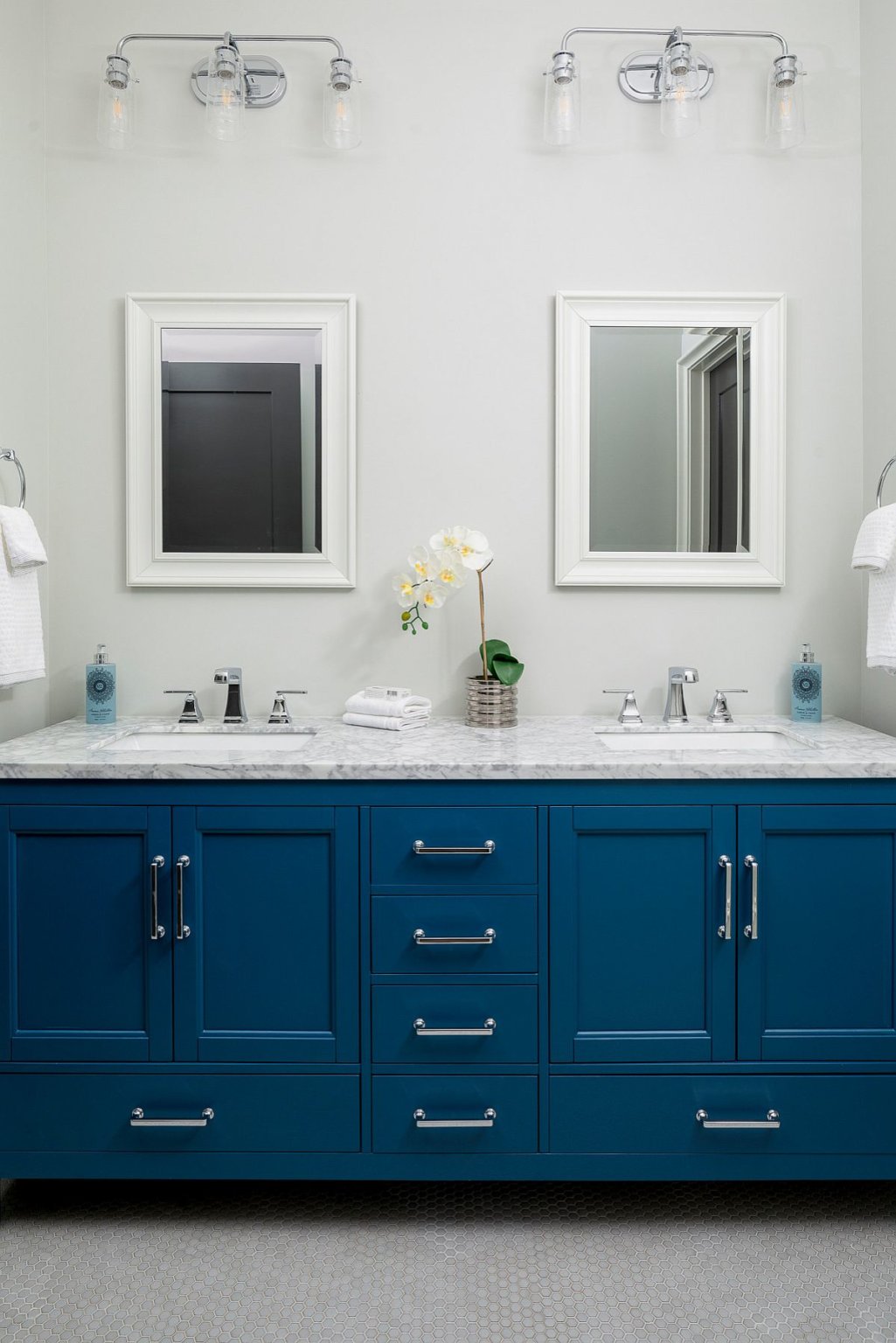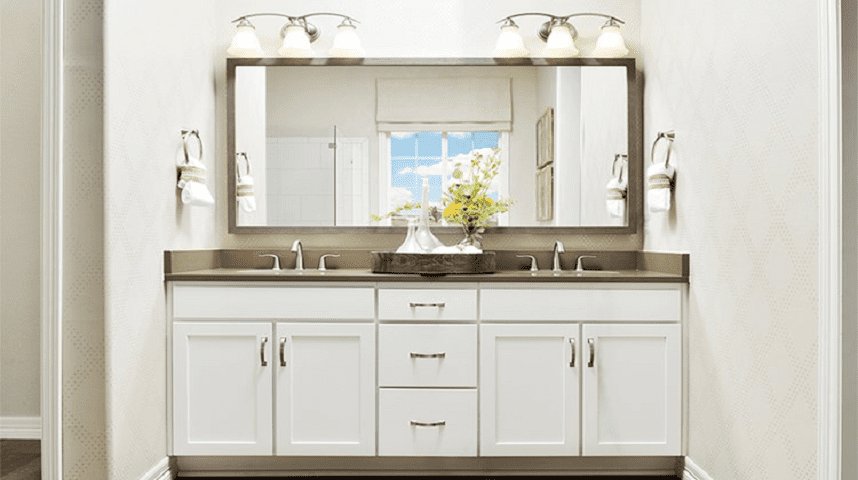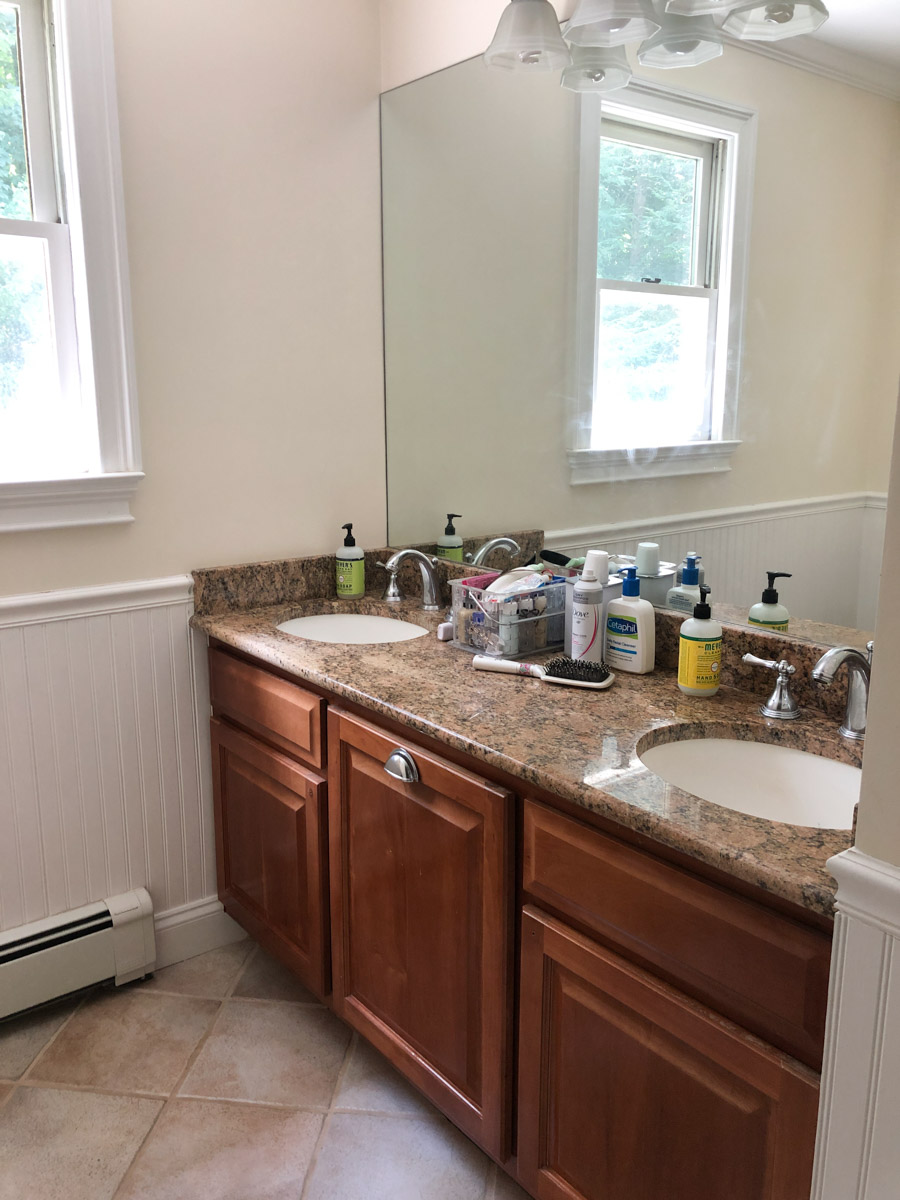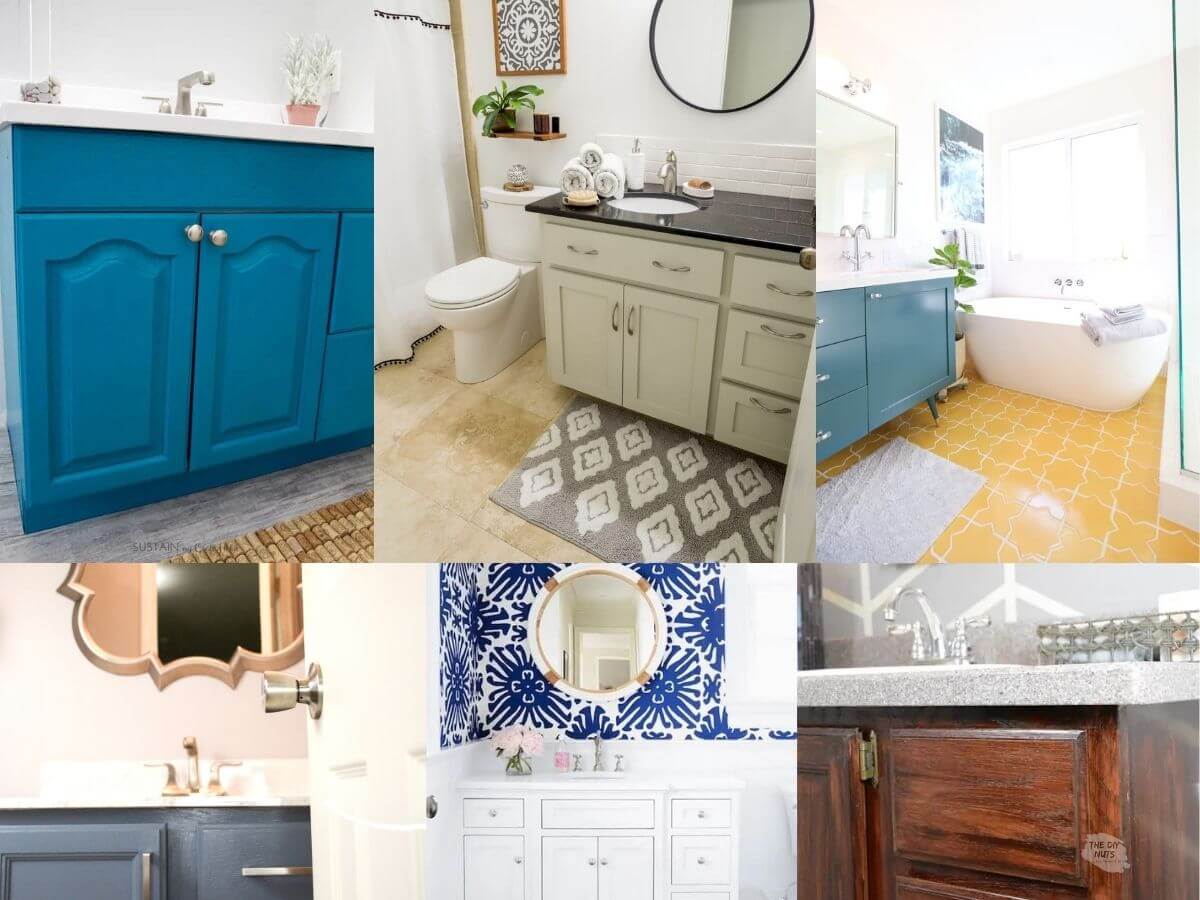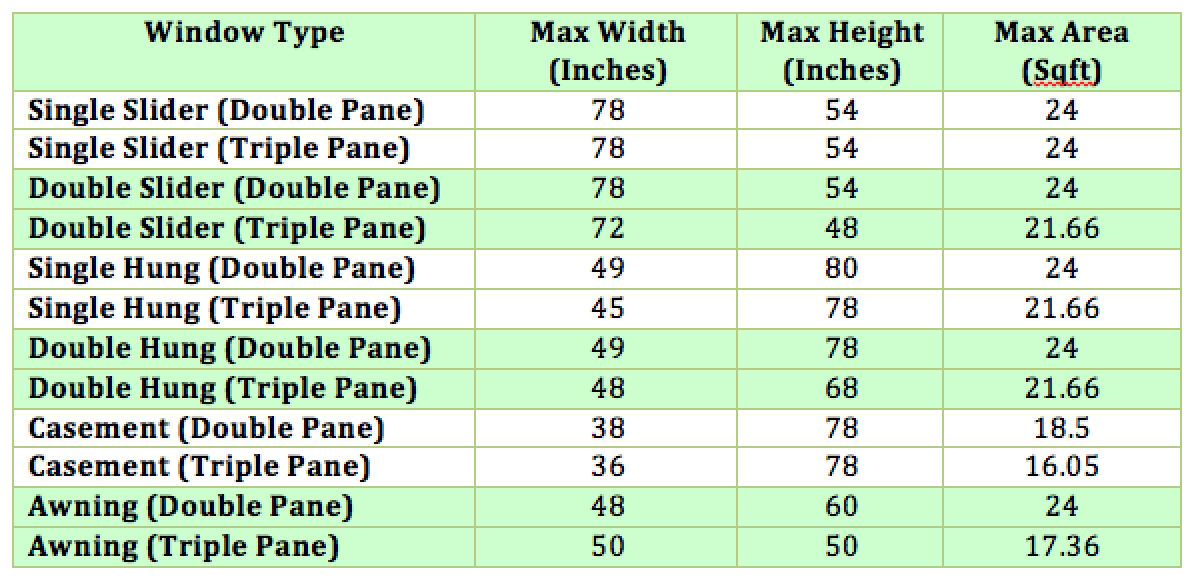Painting a new bathroom vanity is a great way to update the look of your bathroom without breaking the bank. It's a simple DIY project that can be completed in a weekend, and the results can be stunning. Whether you have a bare wood vanity or an old one that needs a fresh coat of paint, this article will provide you with all the information you need to successfully paint your bathroom vanity and give your bathroom a whole new look.Painting a New Bathroom Vanity
If you have a bare wood vanity that has not been painted or stained, you have a blank canvas to work with. This means you have the opportunity to choose any color and finish you desire for your bathroom vanity. The first step in painting a bare wood vanity is to sand it down to remove any rough spots or imperfections. This will also help the paint to adhere better to the wood. Once sanded, wipe down the vanity with a damp cloth to remove any dust.Bare Wood Vanity Painting
Painting your bathroom vanity is a simple DIY project that can be completed with just a few tools and materials. You will need a sander or sandpaper, a paintbrush, a roller, painter's tape, drop cloths, and of course, paint. It's important to choose the right type of paint for your project. A semi-gloss or high-gloss paint is best for bathroom vanities as it is more durable and water-resistant. Additionally, using a paint with a built-in primer can save you time and effort.DIY Bathroom Vanity Painting
Now that you have all your materials, it's time to get painting! Start by removing all the hardware from your vanity, such as knobs and drawer pulls. Then, use painter's tape to protect any areas you do not want to get paint on, such as the edges of the vanity top. Next, use a paintbrush to apply paint to the corners and edges of the vanity. Then, use a roller to paint the larger surfaces. Be sure to use even strokes and apply thin coats of paint for the best results. Allow the first coat to dry completely before applying a second coat.How to Paint a Bathroom Vanity
Here is a step-by-step guide to help you achieve a professional-looking paint job on your bathroom vanity:Step-by-Step Bathroom Vanity Painting
As mentioned earlier, a semi-gloss or high-gloss paint is best for bathroom vanities as it is more durable and water-resistant. However, there are also specialty paints designed specifically for bathroom and kitchen cabinets that can provide an even more durable finish. These paints have a higher sheen and are designed to withstand moisture, heat, and frequent cleaning.Best Paint for Bathroom Vanity
If you have a bare wood vanity, it's important to properly prep the surface before painting. This will ensure that the paint adheres well and provides a smooth finish. Start by sanding the vanity to remove any rough spots or imperfections. Then, use a wood conditioner to help the paint adhere better to the wood. You can also use a primer before painting to create an even base for the paint.Prepping Bare Wood for Vanity Painting
When it comes to painting your bathroom vanity, there are a few techniques you can use to achieve different looks. One technique is called "dry brushing," where you use a dry brush to lightly apply paint over the surface, leaving some of the wood grain visible for a rustic look. Another technique is "distressing," where you sand down certain areas of the vanity after painting to reveal some of the wood underneath for a vintage or shabby chic look.Painting Techniques for Bathroom Vanity
Choosing the right color for your bathroom vanity can be a daunting task, but there are a few things to keep in mind to help you make the best decision. First, consider the overall color scheme of your bathroom. You want your vanity to complement the other colors in the room. You can also take inspiration from your tile or flooring to help you choose a color. Alternatively, you can opt for a neutral color that will go with any color scheme. Remember, you can always add pops of color with accessories and decorations.Choosing the Right Color for Bathroom Vanity
Here are a few tips to help you achieve a professional-looking paint job on your bathroom vanity:Tips for a Professional-Looking Bathroom Vanity Paint Job
How to Paint a New Bathroom Vanity: A Step-by-Step Guide

Preparing the Surface
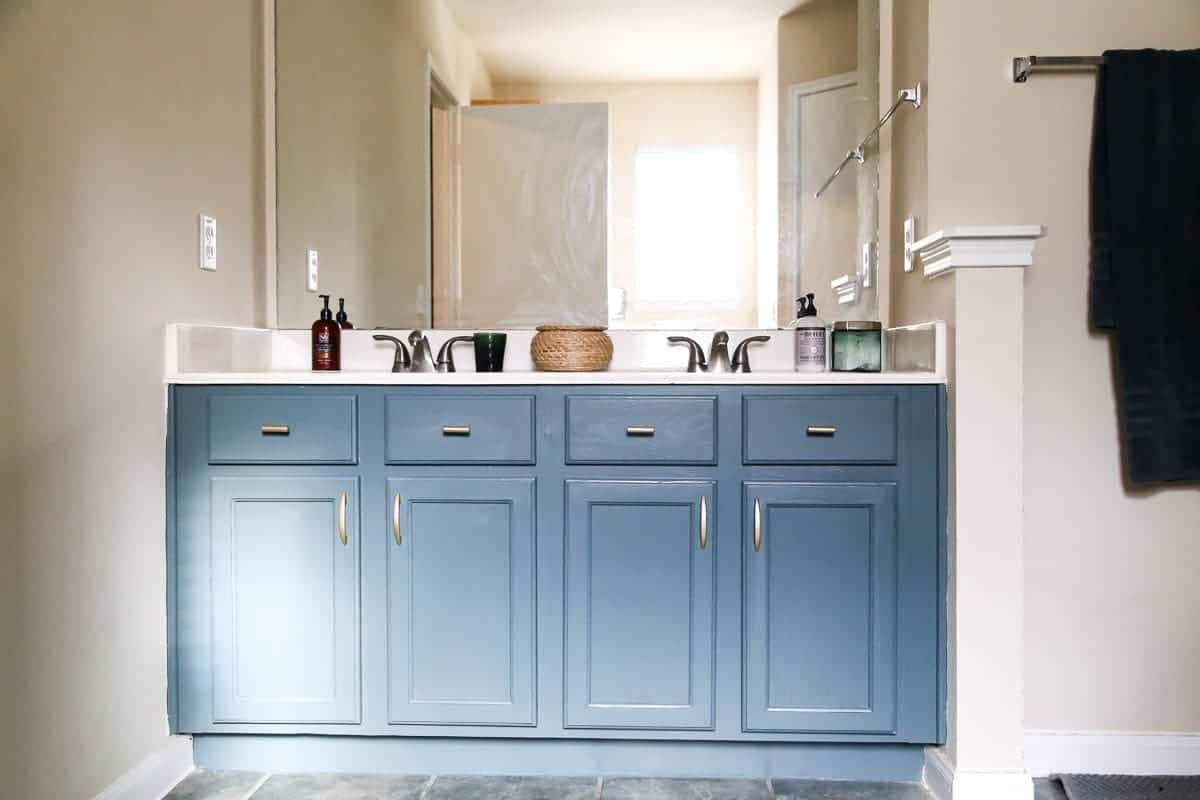 The key to achieving a professional and long-lasting finish on your new bathroom vanity is proper preparation. Start by removing all hardware and doors from the vanity. Then, give the wood a light sanding to smooth out any imperfections and create a rough surface for the paint to adhere to. Use a tack cloth to remove any dust and debris.
The key to achieving a professional and long-lasting finish on your new bathroom vanity is proper preparation. Start by removing all hardware and doors from the vanity. Then, give the wood a light sanding to smooth out any imperfections and create a rough surface for the paint to adhere to. Use a tack cloth to remove any dust and debris.
Priming the Wood
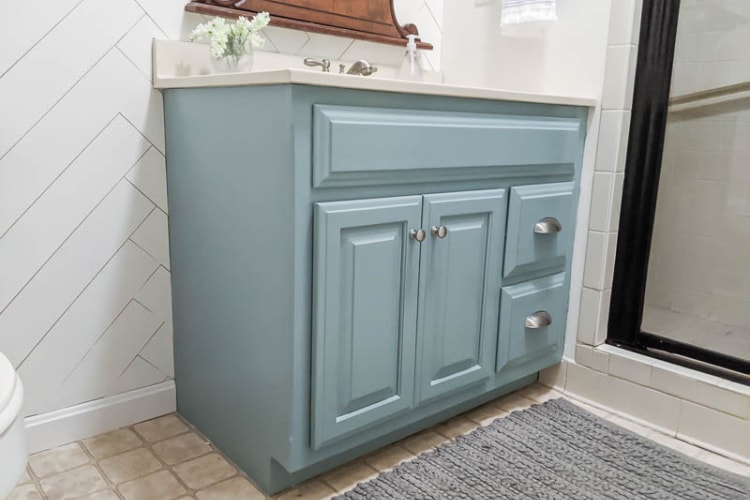 Priming the bare wood is crucial for ensuring the paint adheres properly and creates a smooth finish. Choose a high-quality
wood primer
that is specifically designed for use on bare wood.
Primer
helps to seal the pores of the wood and prevent any bleed-through of tannins or knots. Apply the primer using a brush or roller, making sure to cover all surfaces evenly. Allow the primer to dry completely before moving on to the next step.
Priming the bare wood is crucial for ensuring the paint adheres properly and creates a smooth finish. Choose a high-quality
wood primer
that is specifically designed for use on bare wood.
Primer
helps to seal the pores of the wood and prevent any bleed-through of tannins or knots. Apply the primer using a brush or roller, making sure to cover all surfaces evenly. Allow the primer to dry completely before moving on to the next step.
Choosing the Right Paint
 When it comes to painting a bathroom vanity, it's important to choose a paint that can withstand the damp and humid environment.
Semi-gloss
or
high-gloss
paints are recommended for their durability and resistance to moisture. You can also opt for a
paint and primer in one
formula for convenience.
When it comes to painting a bathroom vanity, it's important to choose a paint that can withstand the damp and humid environment.
Semi-gloss
or
high-gloss
paints are recommended for their durability and resistance to moisture. You can also opt for a
paint and primer in one
formula for convenience.
Applying the Paint
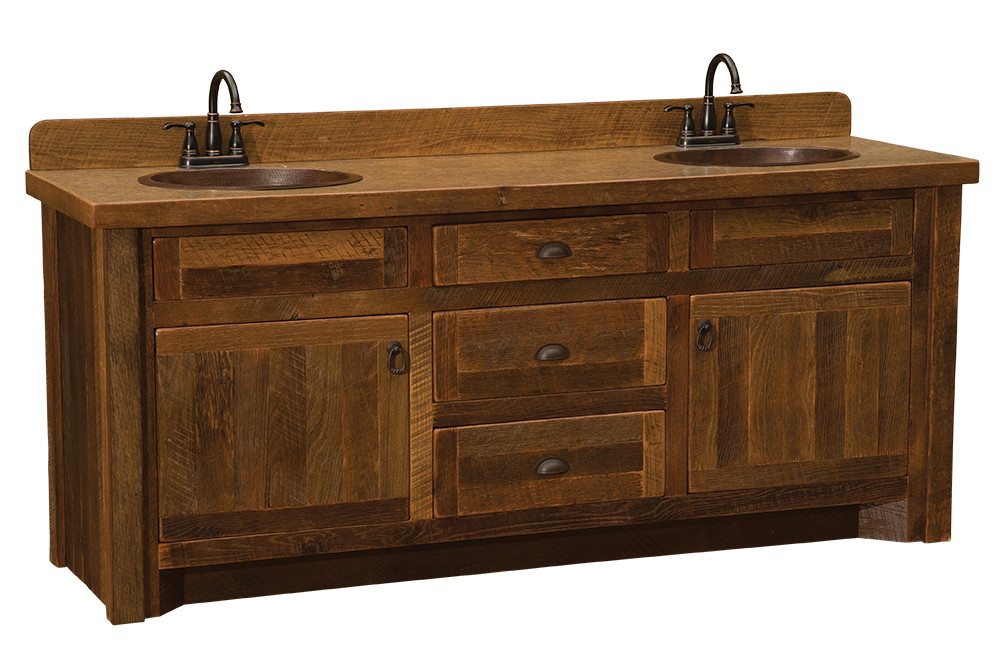 Once the primer is dry, it's time to apply the paint. Use a brush or roller to apply thin, even coats, working in the direction of the wood grain. This will help to prevent visible brush strokes and create a smooth finish. Allow the first coat to dry completely before applying a second coat. Depending on the color and coverage, you may need multiple coats to achieve the desired look.
Once the primer is dry, it's time to apply the paint. Use a brush or roller to apply thin, even coats, working in the direction of the wood grain. This will help to prevent visible brush strokes and create a smooth finish. Allow the first coat to dry completely before applying a second coat. Depending on the color and coverage, you may need multiple coats to achieve the desired look.
Finishing Touches
 After the final coat of paint is dry, you can reattach the hardware and doors to your newly painted bathroom vanity. If desired, you can also add a
clear protective coat
to the surface for added durability and to protect against water damage. This step is especially important for vanities that will be regularly exposed to moisture.
In conclusion, painting a new bathroom vanity is a simple and cost-effective way to give your bathroom a fresh and updated look. With proper preparation and the right materials, you can achieve a professional and long-lasting finish that will enhance the overall design of your space. So why wait? Grab your paintbrush and get started on transforming your bathroom vanity today.
After the final coat of paint is dry, you can reattach the hardware and doors to your newly painted bathroom vanity. If desired, you can also add a
clear protective coat
to the surface for added durability and to protect against water damage. This step is especially important for vanities that will be regularly exposed to moisture.
In conclusion, painting a new bathroom vanity is a simple and cost-effective way to give your bathroom a fresh and updated look. With proper preparation and the right materials, you can achieve a professional and long-lasting finish that will enhance the overall design of your space. So why wait? Grab your paintbrush and get started on transforming your bathroom vanity today.
.jpg)



